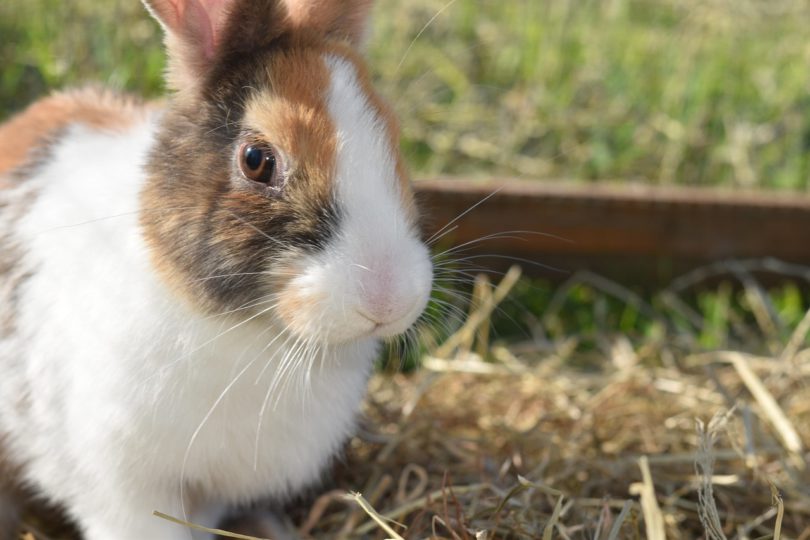
When you picture a rabbit today, you might think of a fluffy pet lounging in a cozy indoor hutch or hopping around a backyard garden. But rabbits haven’t always been the cuddly companions we know them as today. The journey of rabbits from wild animals to domesticated pets is a story that stretches across centuries, involving monks, farmers, explorers, and modern pet lovers.
From the Wild to the Walled Garden
Rabbits are native to southwestern Europe and parts of North Africa, with the European rabbit (Oryctolagus cuniculus) being the ancestor of all domesticated breeds. Unlike hares, which live above ground, rabbits dug burrows and lived in colonies—an adaptation that made them easier to manage when humans first tried to keep them.
The first steps toward domestication are believed to have begun with the Romans. They valued rabbits both as a food source and as a curiosity. Roman records mention “leporaria”—enclosures where rabbits were kept for meat. While these rabbits were not pets in the modern sense, they marked the beginning of humans seeing value in controlling rabbit populations rather than just hunting them.
Monks and Medieval Meals
By the Middle Ages, rabbits were firmly on the menu in many parts of Europe. Monks in particular played a key role in their spread. According to some historical accounts, French monks began breeding rabbits in captivity around the 5th century. Why monks? Surprisingly, it was partly because of a loophole: rabbit fetuses, known as laurices, were classified as “fish” and could be eaten during Lent.
Over time, monasteries bred rabbits not only for meat but also for their soft pelts, which were used to line clothing and make warm garments. These early breeding practices laid the groundwork for the first controlled rabbit populations.
From Farms to Fancy Breeds
As farming practices advanced, rabbits became a staple in rural communities across Europe. They were relatively easy to feed, reproduced quickly, and provided both meat and fur. By the 16th and 17th centuries, selective breeding started to produce rabbits with different coat colors, patterns, and sizes.
This period marked the transition from purely practical animals to creatures admired for their appearance. Aristocrats and wealthy landowners began keeping unusual rabbit varieties in gardens and estates, sometimes as living ornaments. This interest helped pave the way for the “fancy” rabbit breeds we know today.
Rabbits on the Move: Global Spread
Rabbits didn’t stay confined to Europe. During the Age of Exploration, Europeans introduced them to new lands, including the Americas, Australia, and New Zealand. While some introductions were intentional for farming or hunting, others quickly turned disastrous—rabbits became invasive in places like Australia, where they wreaked havoc on native ecosystems.
But alongside these ecological challenges, rabbits continued to rise in popularity as domestic animals. By the 19th century, exhibitions in England were showcasing fancy rabbit breeds much like dog or cat shows. This solidified the rabbit’s role as not just livestock, but also a companion and hobby animal.
From Barnyard to Living Room
The 20th century brought the biggest change in rabbit history: the shift from farmyard animal to beloved family pet. With urbanization, fewer people relied on rabbits for food or fur. Instead, rabbits were increasingly kept indoors, valued for their gentle personalities and relatively low maintenance compared to dogs or cats.
Organizations like the American Rabbit Breeders Association (ARBA) and the British Rabbit Council standardized breeds, while pet care advice shifted toward welfare and enrichment. Rabbits like the Netherland Dwarf, Lionhead, and Mini Lop became especially popular for households.
Today, rabbits are the third most popular pet in many countries, behind cats and dogs. They’re also featured in pop culture—from Beatrix Potter’s Peter Rabbit to Bugs Bunny—cementing their place in our collective imagination.
A Symbol of Change
The history of domesticated rabbits is a mirror of human culture itself. Once valued mainly for survival—meat, fur, and farming—they have transformed into companions, therapy animals, and even social media stars. Yet, their history also reminds us of the responsibility humans have in shaping the lives of animals.
So the next time you see a rabbit hopping happily in a garden or lounging in a living room, remember: you’re looking at the result of over 2,000 years of human history, shaped by practicality, curiosity, and affection.










